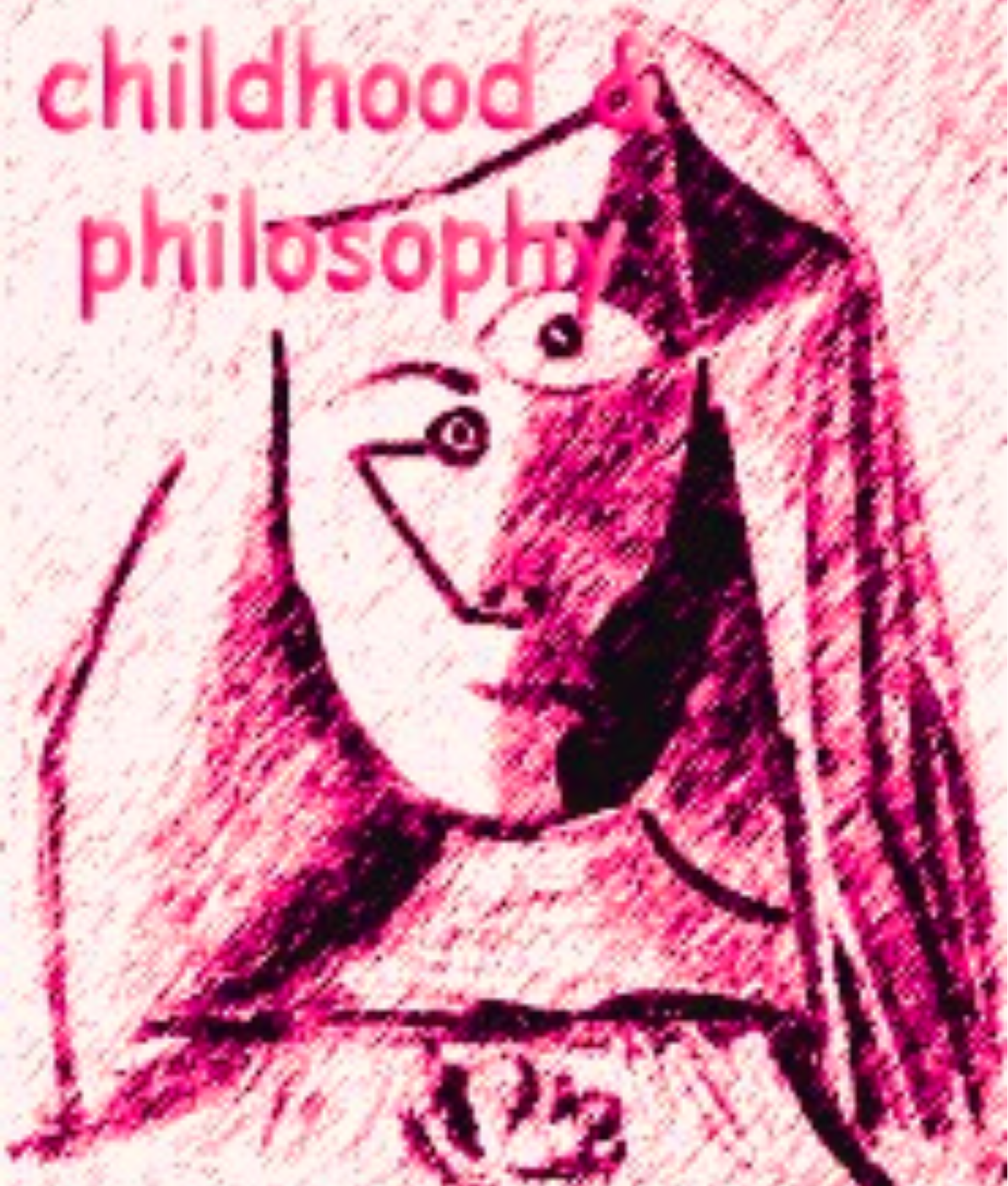a comicsophy approach to teaching philosophy
DOI:
https://doi.org/10.12957/childphilo.2022.64892Keywords:
comics, philosophy, teaching, comicsophyAbstract
The paper presents an innovative approach to teaching philosophy, which the authors name as a comicsophy approach to teaching philosophy. Such creative application of comics in the teaching of philosophy fully corresponds to the skandalonic and dialogical character of philosophy itself. The methodical value of using comics in philosophy teaching is manifested exactly in comics’ distinctly skandalonic character. The skandalon is a methodical process that seeks to provoke students' curiosity by questioning something that otherwise seemed unquestionable, self-evident, to present it in a new light, in order to make it the subject of critical questioning and reflection. Given the visuality of the comics, its fun and root in popular culture, it is an excellent motivational tool for philosophical reflection and understanding of reality, philosophical issues, ideas and concepts in teaching philosophy. By introducing comics as recognizable products of pop culture close to students' reading interest and experience in teaching philosophy, it is easier for them to connect what they learn in school with real life, ie to apply what they have learned in everyday life situations. Comics can be used as a source of information, a form of learning new content, as well as a basis for encouraging dialog and discussion in the classroom. Also, students can individually or in pairs/groups create comics on specific philosophical topics, thus developing creative, critical and collaborative thinking. The paper presents specific criteria for evaluating comics on philosophical issues that students create in philosophy classes.
Downloads
References
Bloom, B. S., Engelhart, M. D., Furst, E. J., Hill, W. H., & Krathwohl, D. R. (1956). Taxonomy of Educational Objectives: The Classification of Educational Goals by a Committee of College and University Examiners (Handbook I: Cognitive Domain). New York: Longmans Publishing.
Botzakis, S. (2009). Adult fans of comic books: What they get out of reading. Journal of Adolescent & Adult Literacy, 53(1), 50-59.
Cerić, H. & Cerić, E. (2020). Strip kao medij filozofske poruke: stripozofski pristup nastavi filozofije. Sarajevo: Druga gimnazija.
Cerić, H. (2016). Utjecaj primjene stripa u nastavi na kvantitet, kvalitet i trajnost znanja, Zbornik radova sa znanstveno-stručne međunarodne konferencije: „Ka novim iskoracima u odgoju i obrazovanju“, Filozofski fakultet u Sarajevu – Odsjek za pedagogiju, 11-12. oktobar 2013., april 2016, 258-273.
Cerić, H. (2013). Skandalon u oblačićima: Kako koristiti strip u nastavi. Sarajevo: CNS.
Cerić, H. (2012): Percepcija nastave uz primjenu stripa u odnosu na klasičnu nastavu iz predmeta Filozofija sa logikom, Sarajevo Social Science Review / Sarajevski žurnal za društvena pitanja, Vol 1, No 1 (2012), Sarajevo, 9-22.
Cmuk, M. (2017). Stripizam. Bizovac: Ogranak Matice hrvatske u Bizovcu.
Ćurko, B. (2017). Kritičko mišljenje u nastavi filozofije, logike i etike. Zagreb: Hrvatsko filozofsko društvo.
Derrida, J. (1976). Of Grammatology. Baltimore and London: The Johns Hopkins University Press.
De Rougemont, D. (2005). Informacija nije znanje. Europski glasnik-Le Messager européen, (10), 239-254.
Dewey, J. (1989). Essays and how We Think. (Volume 8:1933). Carbondale and Edwardsville: Southern Illinois University Press.
Dewey, J. (1922). Human Nature and Conduct: An Introduction to Social Psychology. New York: Henry Holt and Company.
Echeverria, E. and Hannam, P. (2016). The Community of Philosophical Inquiry (P4C): A Pedagogical Proposal for Advancing Democracy. In: Gregory, M.R., Haynes, J. and Murris, K. (eds.). The Routledge international handbook of philosophy for children, Taylor & Francis, 3-10.Eisner, W. (2008). Comics and Sequential Art: Principles and Practice from the Legendary Cartoonist. New York: Norton.
Festinger, L. (1957). A theory of cognitive dissonance. Stanford, California: Stanford university press.
Foucault, M. (1980). Power/knowledge: Selected interviews and other writings, 1972-1977. Vintage.
Freire, P. (2017). Pedagogija autonomije. Clio: Beograd.
Gadamer, H.G. (2004). Truth and method. London-New York: Continuum.
Gangwer, T. (2009). Visual impact, visual teaching: Using images to strengthen learning (2nd ed.). Thousand Oaks, CA: Corwin Press.
Gardner, S. (1995). Inquiry Is No Mere Conversation: Facilitation of Inquiry is Hard Work, Analytic Teaching and Philosophical Praxis, 16(2), 102-111.
Haynes, J. and Murris, K. (2012). Picturebooks, Pedagogy and Philosophy. NewYork, London: Routledge.
Liessmann, K. P. (2008). Teorija neobrazovanosti: zablude društva znanja. Naklada Jesenski i Turk.
Lipman, M. (2003). Thinking in education. Cambridge University Press.
Marinković, J. (1983). Metodika nastave filozofije. Zagreb: Školska knjiga.
Marinković, J. (1990). Filozofija kao nastava. Zagreb: Hrvatsko filozofsko društvo.
Mayer, R. (2005). Cognitive Theory of Multimedia Learning In: Mayer, R. (ed.), The Cambridge Handbook of Multimedia Learning, Cambridge: Cambridge University Press.
McCloud, S. (1993). Understanding Comics: The Invisible Art. New York: Harper Perennial.
Medina, J. (2008). Brain Rules: 12 Principles for Surviving and Thriving at Work, Home, and School. Seattle: Pear Press.
Meskin, A., & Cook, R. T. (2012). The Art and Philosophy of Comics: An Introduction, In: Meskin, A. & Cook, R. T. (Eds.). The art of comics: a philosophical approach, Blackwell Publishing Ltd -John Wiley & Sons, xiv -xli.
Paivio, A. (1986). Mental representations: A dual coding approach. New York: Oxford University Press.
Pustz, M. J. (1999). Comic Book Culture: Fanboys and True Believers. Jackson: University of Mississippi Press.
Russell, B. (2004). Sceptical essays. Psychology Press.
Sadoski, M. & Paivio, A. (2004): A dual coding theoretical model of reading In: Ruddell, R. B & Unrau, N. J. (eds.), Theoretical models and processes of reading (5th ed.), Newark, DE: International Reading Association.
Said, E. (2002). Homage to Joe Sacco (introduction). In: Sacco, J. Palestine. Seattle, WA: Fantagraphics Books, i-v.
Sipe, L. (1998): How picture books work: A semiotically framed theory of text-picture relationships, Children’s Literature in Education, 29(2), 97-108.
Smaniotto, E. I. (2020). Quadrinhosofia: uma proposta metodológica para a classificação conceitual das histórias em quadrinhos quanto à sua abordagem filosófica. Revista Cajueiro: Ciência da Informação e Cultura da Leitura; v. 2 n. 2 (2020): Revista Cajueiro: Ciência da Informação e Cultura da Leitura-v. 2 n. 2 (2020): maio/nov. 2020; 236-273, 24(2), 236-273.
Sousanis, N. (2015). Unflattening. Cambridge, Massachusetts / London, England: Harvard University Press.
Zittoun T. and Brinkmann S. (2012). Learning as Meaning Making. In: Seel N.M. (eds) Encyclopedia of the Sciences of Learning. Boston, MA: Springer.




